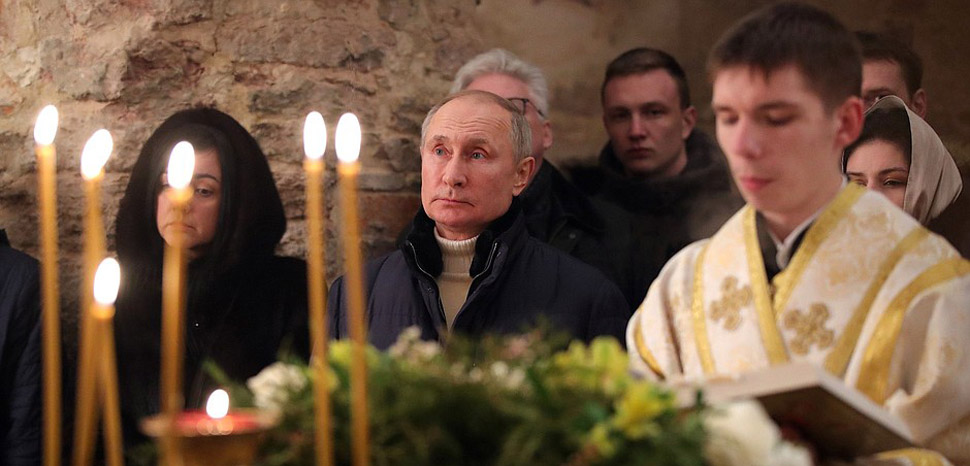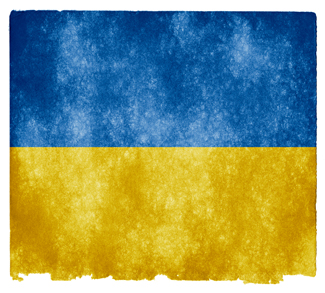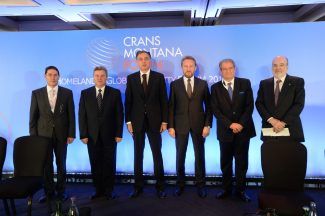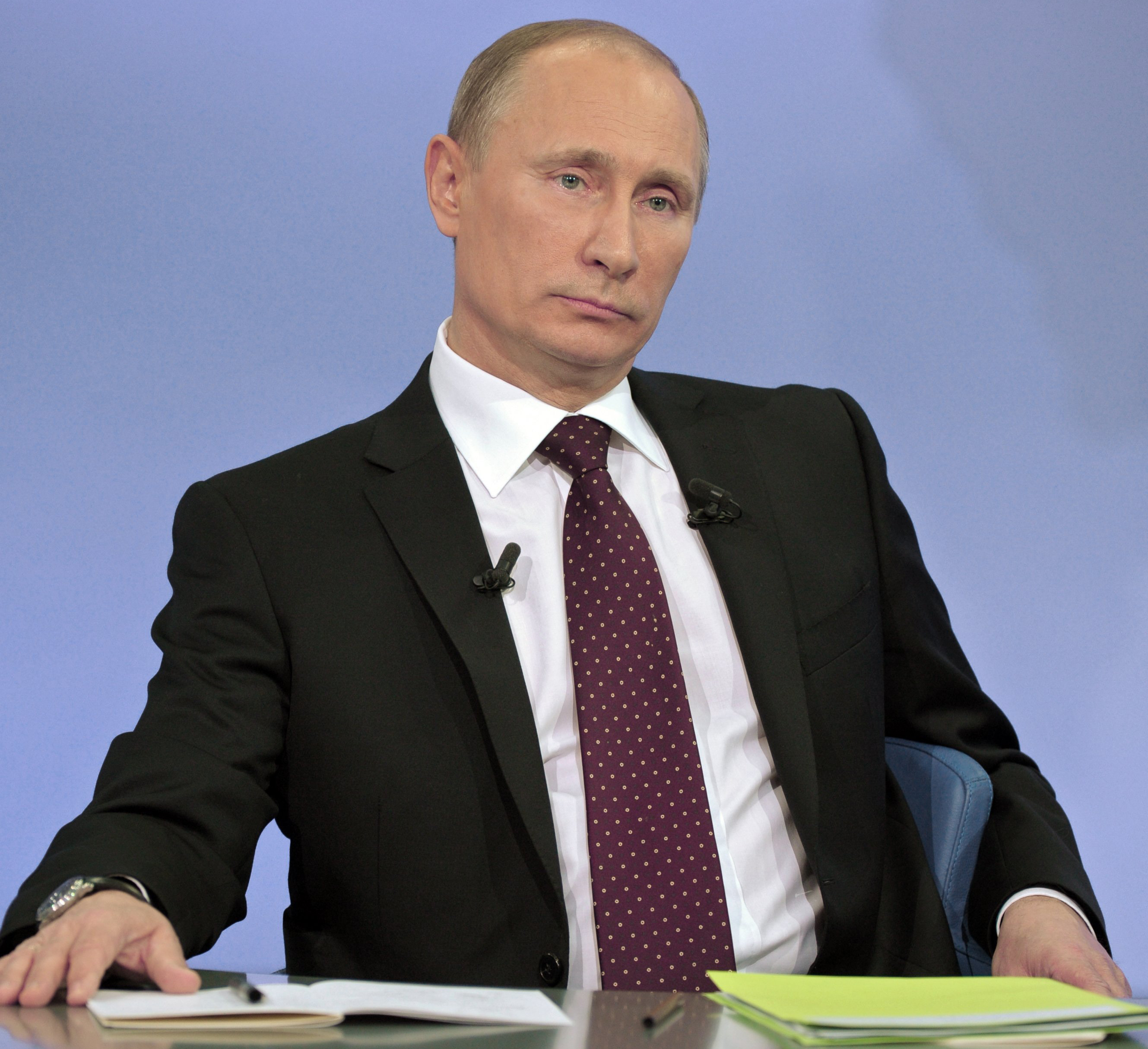In today’s global strategic environment, Russia is one of the international system’s major players along with the US and China. Its national power encompasses formidable military, intelligence, and technological capabilities, as well as the world’s largest nuclear arsenal and an assertive diplomatic projection that relies on asymmetric equalizers and force multipliers. Likewise, the Kremlin has also mastered the esoteric art of hybrid warfare. Plus, it contains vast deposits of natural resources, including fossil fuels like oil and natural gas, metallic minerals, uranium, gemstones, fresh water, and timber, amongst others. Moreover, although its ultimate outcome is still unclear at this point, the Russian invasion of Ukraine shows that Moscow is willing to use military might in order to restore its status as a major force to be reckoned with. However, the country’s long-term demographic prospects look rather gloomy, an issue that represents a critical Achilles’ heel. If this phenomenon is not dealt with, Russia’s fate might be sealed in an unfavorable way. Needless to say, a declining population can potentially compromise Russia’s ambitious revisionist plans and perhaps even its own survival as a national state.
Although Russia is the world’s ninth most populated nation (with 145 million people), its population density is dismal. With only 22 inhabitants per square mile, Russia is below much smaller countries like New Zealand (45) and Belize (43). This contrast is even more baffling considering that the Russian Federation covers more than 6.6 million square miles, which makes it the world’s largest country. On the other hand, the Russian population is not evenly distributed. Nearly three fourths of it are located in European Russia, the area west of the Urals that constitutes the Eurasian behemoth’s heartland. In turn, despite its huge extension, the Siberian hinterland is sparsely populated and only contains some regional nerve centers, such as Khabarovsk, Novosibirsk, Omsk and Vladivostok. Based on this disproportion, some geopolitical thinkers ‒ including Zbigniew Brzezinski ‒ have argued that Russia could eventually end up losing its easternmost territories as a result of foreign predation, balkanization, or the gradual transformation of these areas’ demographic profile due to immigration from nearby Asian countries.
Furthermore, the Russian fertility rate fell below replacement levels after the disintegration of the Soviet Union and the downward trend was not reverted until the early 2000s. In 2021, there were 1.823 births per woman, a noteworthy improvement in comparison to the figures seen in the 90s (the lowest point was observed in 1998 when it plunged to 1.247). However, the replacement rate (2.1 births per woman in average) has not been reached yet. In the long run, this decline can be explained as a result of the combination of difficult circumstances that have discouraged births and increased mortality, including several conflicts, prolonged economic hardship, widespread pessimism, financial volatility, currency depreciation, deindustrialization, mismanagement, political turmoil, alcoholism, and drug abuse, amongst others.
Many of these problems were common in the last decade of the 20th century, an era of constant chaos that can be regarded as the period of ‘Weimar Russia.’ After Vladimir Putin and his Siloviki clan took over, there has been an attempt to solve complicated societal issues but, so far, there is only a partial degree of success. In this regard, the Kremlin has explicitly stated that addressing the ongoing Russian demographic crisis is an urgent priority. After all, since Russia is hard to defend due to its vulnerable geopolitical exposure in the very core of Eurasia, depopulation would deepen the weakness of its position and perhaps even embolden potential invaders to strike. In the last couple of decades, some progress has been made thanks to favorable externalities (like high oil prices), the growing strength of the control held by state as an anchor of stability, the restoration of national morale, and the intervention of skillful technocrats. Nevertheless, in other areas and there are no effective solutions in sight. Plus, it remains to be seen if the Ukraine War will entail a high number of military casualties and if the impact of Western economic and financial sanctions brings a severe demographic downturn.
Accordingly, certain geopolitical analysts, think tanks, leaders, and policymakers contend that the long-term deterioration of Russia’s demographic shortcomings will lead to either its fragmentation or downfall as a functional national state, permanently undercutting Russia’s status as a great power. After all, without a sustainable and abundant manpower, it would be tremendously challenging to hold the country together, foster a dynamic consumer market, revive industrial productiveness, retain strong military capabilities, and preserve the continuous existence of Russian culture, identity, and language. Moreover, a rapidly ageing population is a sure recipe for economic disaster. Younger generations will have to carry the growing burden of having to pay the pensions and social security services of their elders. In turn, that distortion will diminish the availability of funds for savings, investments, credit for business projects that generate wealth, and the budgets used by the state to cover defense expenditures, and services such as education and healthcare.
In short, a demographic contraction entails detrimental consequences for national power. In fact, according to Hans Morgenthau, “no country can remain or become a first-rate power which does not belong to the most populous nations of the earth.” Indeed, historical experience demonstrates that large populations are a necessary ingredient to run flourishing empires. To a certain extent, such axiom is still valid nowadays. One of the common denominators shared by both great powers (like the US and China) and emerging powers (such as India, Brazil, Turkey) is a large population. Nevertheless, the connection between an abundant demographic volume and a dominant position is not so straightforward. Nobody believes that Indonesia, Nigeria, or Pakistan can achieve global hegemony in the 21st century only because they are highly populated states. On the other hand, nations with small populations (including Israel, Cuba, or Switzerland) can compensate their limited demographic size with other elements of national power in order to develop an assertive attitude and punch far above their weight. Moreover, fertility rates in advanced countries like Germany (1.602), Japan (1.368), and South Korea (1.082) are way lower than in Russia, but their demise is not necessarily seen as imminent.
Hence, it is debatable if Russia truly has its days numbered as a great power due to an inevitable demographic twilight. Yet, such possibility represents a feasible scenario so Moscow cannot afford to ignore it just because it sounds unpleasant, especially since the phenomenon could jeopardize the very survival of the Russian state by increasing the chances of external aggression and/or an implosion. Therefore, it is pertinent to examine if and how the Eurasian heavyweight could counter, diminish or ‒ at the very least ‒ manage the problems associated with its shrinking population. In fact, as shown below, a closer analysis reveals that there are complementary strategic courses of action that Moscow is already following, but all of them entail meaningful challenges, risks, and difficulties. Since there is no abundance of cards the Kremlin can play with, upping the ante and aiming higher is likely the only way forward. Backing down would be the equivalent of conceding defeat.
Encouragement of Higher Birth Rates
The most direct intervention involves the encouragement of higher birth rates amongst the Russian population. This can be done through ideological elements and by offering material incentives. The former has to do with the revival of ‘family values’ through the mobilization of organized religion as an instrument of societal influence. Indeed, just like most other Abrahamic religions (including many branches of Christianity), the Russian Orthodox church strongly endorses traditional perceptions about gender roles, marriage, motherhood, childrearing, parenting, social mores, faith as an element that provides a sense of meaningfulness, and the place of an individual as a member of a community of fellow believers. Unsurprisingly, such teachings favor the development of conservative identities, worldviews, and lifestyles. Likewise, Islam ‒ one of the most important religious faiths in Russia ‒ emphasizes similar values.
Concerning its demographic implications, this doctrinal framework promotes the growth of fertility rates. Indeed, highly religious groups like Haredi Jews, Evangelical Christians, or pious Muslims tend to have large families. This is one of the reasons why the ruling Siloviki clan has courted the Russian Orthodox church as an ideological and political ally. Even President Putin has explicitly presented himself in public as a devout believer. Through said partnership, Russia has sought to position itself as a neo-Byzantine civilizational bulwark of Orthodox Christendom ‒ the country’s hegemonic religious denomination ‒ that openly rejects classical Western liberalism, a school of thought whose tenets include individual liberty, secularism, cosmopolitanism, the legitimacy of self-gratification, and a strong distrust in structures like religion, families, and the state. Besides, some of the leaders and clerics of religious minorities present in Russia have been co-opted as well, which is understandable considering that, although Russia is mainly a Slavic nation, it has also operated as a multi-ethnic empire for centuries.
At a first glance, this path might seem counterintuitive in a country in which Marxism ‒ which prescribes the enforcement of militant atheism ‒ was the state’s official ideology for more than seven decades. It also sounds rather old-fashioned from the perspective of Western observers, but one must keep in mind that it would hardly be the first time that religion is used as a tool of statecraft. Paraphrasing Cardinal Richelieu, the state ‒ unlike the eternal souls of humans ‒ has no immortality so its ‘salvation’ requires the timely and crafty use of worldly methods. Plus, it would be consistent with the contemporary return of religion as major political force in places like Turkey, Israel, Poland, Iran, Brazil, and even the US. However, even though the Orthodox Church is a relevant wielder of influence in Russian society, this path has its limits. In fact, the overwhelming majority of Russian citizens are nominally classified as Orthodox Christians, but nearly half (44%) of those under the age of 25 do not regard themselves as religious. In other words, this approach might not suffice to convince the younger generations to have more kids.
The second option comprises policies that provide incentives that support bigger families. In fact, in order to foster “maternity capital,” the Russian government has ‒ not unlike other European states facing similar demographic issues ‒ implemented pro-natalist measures like the distribution of welfare benefits, tax breaks, and free meals for schoolchildren. The idea is that these economic rewards can make it easier for low-income couples to have children. Yet, it is doubtful if handouts are powerful enough to offset structural phenomena which diminish the willingness of people to reproduce, including technological change, urbanization, modernity, the availability of contraceptives and increasingly demanding professional environments. Another possibility would be to redesign educational contents (especially for young children and teenagers) so that students embrace the idea of having kids as something desirable, but even if such plan is moderately successful, the transformation of cultural mindsets and attitudes of a whole nation takes generations and Russia could be running out of time in the near future.
Regional Hegemony in the post-Soviet Space
Much has been written about Moscow’s relentless campaign to regain its previous position as the regional hegemon in the post-Soviet space, an interest whose rationale responds to geopolitics, national security, and grand strategy. However, this attempt to recover the sphere of influence once held by both the Russian Empire and the Soviet Union is also motivated by the fact that several countries in the so-called ‘near abroad’ contain sizeable populations of ethnic Russians, Russian speakers, and other communities that share certain common denominators with Russians in terms of history, religion, or sociocultural profiles. To a certain extent, that is what the concept of the so-called ‘Russian world’ evokes. In other words, Russia’s immediate periphery represents a vast reservoir of people, the resource it lacks most.
The desire to harvest this external demographic bonus is one of the key reasons that explains the Kremlin’s strong interest and active involvement in Ukraine, the Crimean Peninsula, the Donbass, Belarus, the Caucasus, Transnistria, Central Asia, and the Baltics. For instance, although Ukraine also has a declining population ‒ a phenomenon accelerated by the large exodus triggered by the ongoing war ‒ the country might still offer a substantial demographic bonus worth absorbing. Plus, the efforts undertaken by Moscow to foster reintegration ‒ reflected in the creation of frameworks like the Eurasian Economic Union or the Collective Security Treaty Organization and projects such as unification with Belarus ‒ under Russian leadership are stepping stones towards the goal of compensating Russia’s demographic decline. Ideologically, this course of action responds to what the doctrine of Eurasianism holds about the condition of Russia as the spiritual imperial successor of both Byzantines and Mongols. Moreover, the delivery of Russian passports in some of these areas and the creation of facts on the ground ‒ like annexations or outright military interventions ‒ have been explicitly justified as an expression of the role of Russian Federation as the ultimate defender of ethnic Russians, even if they were born and raised in neighboring countries.
Nevertheless, this pursuit is complex and challenging. For instance, there are diverging attitudes. The populations of Belarus, Eastern Ukraine ‒ often referred to as ‘Novorossiya’ ‒ Armenia, Kazakhstan, Abkhazia, South Ossetia harbor Russophile sentiments, but other groups (Western Ukrainians, Georgians and the non-Slavic peoples of the Baltics) are deeply reluctant to find themselves again under Russian suzerainty. On the other hand, the Azeris, Uzbeks, and Turkmens have embraced an orientation of strict strategic neutrality, but they are fiercely protective of their independence and identity. Places like Transnistria are not even contiguous to Russian territory, so their eventual absorption seems unlikely, at least for the time being. Thus, in order to enhance the attractiveness of its gravitational pull, Moscow can resort to the generation of shared economic incentives, the Russification of non-Slavic populations so that they feel like they belong to a ‘Greater Russia,’ and the acceptance of immigrants willing to assimilate.
The achievement of regional hegemony in the post-Soviet space is the cornerstone of contemporary Russian grand strategy and the realization of this ambition would be a major geopolitical accomplishment that could bring demographic benefits. Yet, as Machiavelli observed, in the sphere of high politics, nothing of importance can be attained without exposure to a substantial amount of danger. In this respect, the risks associated with this project include the foreseeable intensification of geopolitical rivalries with NATO in multiple fronts, toxic fallout derived from the Ukraine War, the prospect of awakening local frozen conflicts, more ‘color revolutions,’ tensions with regional powers such as Turkey and Iran, centrifugal forces ‒ like separatist militias or jihadist insurgencies ‒ and the counterproductive effects of using too much hard power. Hence, Moscow needs to chart its course carefully. The plan can be derailed as a result of miscalculation or hostile intervention. Under these circumstances, resorting to sheer military coercion on a large-scale could backfire, since it would portray Moscow as an illegitimate and heavy-handed imperial conqueror and also because a high number of casualties in a war could make Russia bleed badly, accelerating further the very process that the Russians are desperately trying to avoid.
The Quest for Lebensraum in the Arctic
Far from being neutral, climate change is a phenomenon that entails political implications, especially in a zero-sum system in which relative gains are the rule rather than the exception. Therefore, even if it will unleash a negative impact for several countries, it could also represent a beneficial externality for others. It must be noted that, since geography shapes the behavior of states in international politics, a tectonic environmental transformation will likely act as a geopolitical game-changer regarding the realities associated with the strategic control of physical space and the global balance of power.
In this case, Russia is well positioned to harness the advantages derived from increasing temperatures in the Arctic. The proximity of the Siberian coastline to the North Pole, the availability of gateways ‒ like the ports of Murmansk, Arkhangelsk and Vladivostok ‒ its unparalleled fleet of nuclear icebreakers and its scientific expeditionary expertise give Moscow a leading edge in the race for the conquest of the world’s northernmost corner. Melting ice sheets would eventually provide a window of opportunity to tap the vast deposits of natural resources found there (fossil fuels, metallic minerals, fresh water and fisheries) in the coming decades, as well as to pursue an imperial ambition that has remained unsatisfied since the time of the Czars: acquiring access to warm water ports in order to develop the ability to turn Russia into a world-class maritime power. The Russian Federation would finally have the unrestricted chance to engage in international trade and to dominate ‒ militarily and geoeconomically ‒ the Arctic Ocean. The materialization of this scenario could render Siberia inhabitable for the very first time in modern history as deep tundra recedes. Its economic revitalization could generate incentives to attract settlers from other parts of Russia in search for better opportunities and willing to start new lives there in communities of frontiersmen and pioneers. Therefore, the expectation is that the resulting bonanza could act as a catalyst of demographic growth.
Accordingly, this “cryo-political” quest for Lebensraum in the Arctic holds a promising potential to boost the overall vital strength of the Russian state as a living organism. Moreover, in this undertaking time is on Moscow’s side. Plus, Beijing’s plans to create a ‘Polar Silk Road’ as a geoeconomic corridor that connects Asia with Europe through shipping lanes across the Arctic can also be helpful for Moscow’s interests since they contemplate the upgrade of existing infrastructure, the creation of new transportation channels, the flow of investments and trade, the extraction of raw materials, and the generation of lots of profitable business opportunities.
Nonetheless, the future is not written in stone. The Kremlin is going to need assertiveness, a close coordination with Beijing to forge a win-win framework, a meticulous formulation of sound policies that align available means with the intended outcomes, and a great deal of resources to make it happen. Otherwise, the opportunity will be missed. However, there is an important catch that cannot be overlooked. Considering the far-reaching significance of what is at stake, other circumpolar states ‒including the US, Canada and Scandinavian countries ‒ will try to curtail Russian ambitions there in order to advance their own geopolitical agendas in the far North. Keep in mind that, as a by-product of the Ukraine War, both Finland and Sweden will likely join NATO. Accordingly, these clashing interests will fuel an intense strategic competition between the Eurasian powers and the West, opening yet another front in the new Cold War. In short, this road can be simultaneously rewarding and hazardous.
Upgrade of Technological Capabilities
Per se, technological progress does not have the power to stop a demographic crisis, but innovations like the automation of systematized industrial processes, advanced robotics, and artificial intelligence can perform tasks traditionally undertaken by human operators in business activities and battlefields. Others like quantum computing and nanotechnology can exponentially enhance the ability to deliver outcomes of high added value with fewer resources. Hence, it represents an asset that can compensate shortages of labor and soldiers. Moreover, even if the overall availability of manpower decreases, the quality, competitiveness, and comparative advantages of specialized human capital can still be fostered in high-tech professional environments. Hence, cutting-edge technologies can diminish the detrimental effects of depopulation on national power and economic productiveness.
Since the early 20th century, the Russians have certainly been aware of the growing strategic significance of technology. Under Stalin’s draconian rule, the Soviet Union carried out an ambitious plan of accelerated industrialization as a priority for closing gaps which could compromise national security. Unsurprisingly, nowadays the Russian Federation has the globe’s fourth largest number of STEM graduates. Nonetheless, regarding technological capabilities, Russia is in a paradoxical situation. It has a military-industrial complex that manufactures state-of-the-art weaponry and it is one of the leading powers in the field of aerospace. Nonetheless, such advantages rarely transcend the domain of defense, national security, and intelligence. In contrast, the civilian and commercial sectors of the Russian economy are badly outdated, underfunded and underdeveloped. Notably, Russia has established research and development sites ‒such as Zelenograd and the Skolkovo Innovation Centre‒ whose projects would be useful to generate advanced technological inventions that can harness the market potential of the so-called “Fourth Industrial Revolution.” Hence, these clusters can support the diversification of the structural profile of the Russian economy, which is still highly reliant on the exports of commodities as a source of hard currency.
Furthermore, a demographic benefit of reindustrialization is that, since it increases wealth and development, the process can bring favorable conditions that encourage people to have kids based on the assumption that prosperity can provide a bright future and rewarding opportunities for their offspring. Nonetheless, lack of credit, the imposition of economic sanctions (like the restrictions of Western exports of high-tech items to Russia), financial instability, deficient internal economic interconnectedness, and a limited access to international trade as a result of Russia’s condition as a de facto landlocked country represent powerful obstacles that cannot be easily overcome. Thus, the pursuit of this course of action would require a much greater effort. Otherwise, stagnancy will not trigger the industrial boost that is needed to counter the pernicious ramifications of a sharp demographic downturn. As the race for global technological superiority intensifies, the accomplishment of this imperative becomes even more pressing.
Concluding Remarks
Russia’s demographic crisis represents a problem that could unravel its position as a great power in a foreseeable future. The clock is ticking and if this structural weakness is not effectively addressed soon, it is a matter of time before a point of no return is reached. However, it is premature to assume that Russia is already doomed no matter what. Population is certainly important and inertia could very well lead to the demise of Russia as a functional national state, but the course of history is determined by a myriad of factors.
Since inaction is not an option, several strategies are being implemented to prevent such catastrophe or ‒ at the very least ‒ diminish its most corrosive consequences, but none of them can be seen as a silver bullet. Therefore, even if approaching these challenges is an uphill battle, Moscow has no choice but to double down and muster every resource, capability, and instrument at its disposal in order to avert the threatening prospect of depopulation and come up with countermeasures. The testament of history dictates that, when the very survival of a nation is at stake ‒ particularly if that nation happens to be a major power ‒ there is a determined resolve to act aggressively in an attempt to reach a more secure destination.
Regardless of whether the Russian gamble is successful or not ‒ it could lead to either disastrous ruin or enhanced safety ‒ the shockwaves of the aftermath will resonate for decades to come. Since this is a literally a matter of life and death, all bets are off.
*This article was originally published on May 2, 2022.
The views expressed in this article belong to the authors alone and do not necessarily reflect those of Geopoliticalmonitor.com




